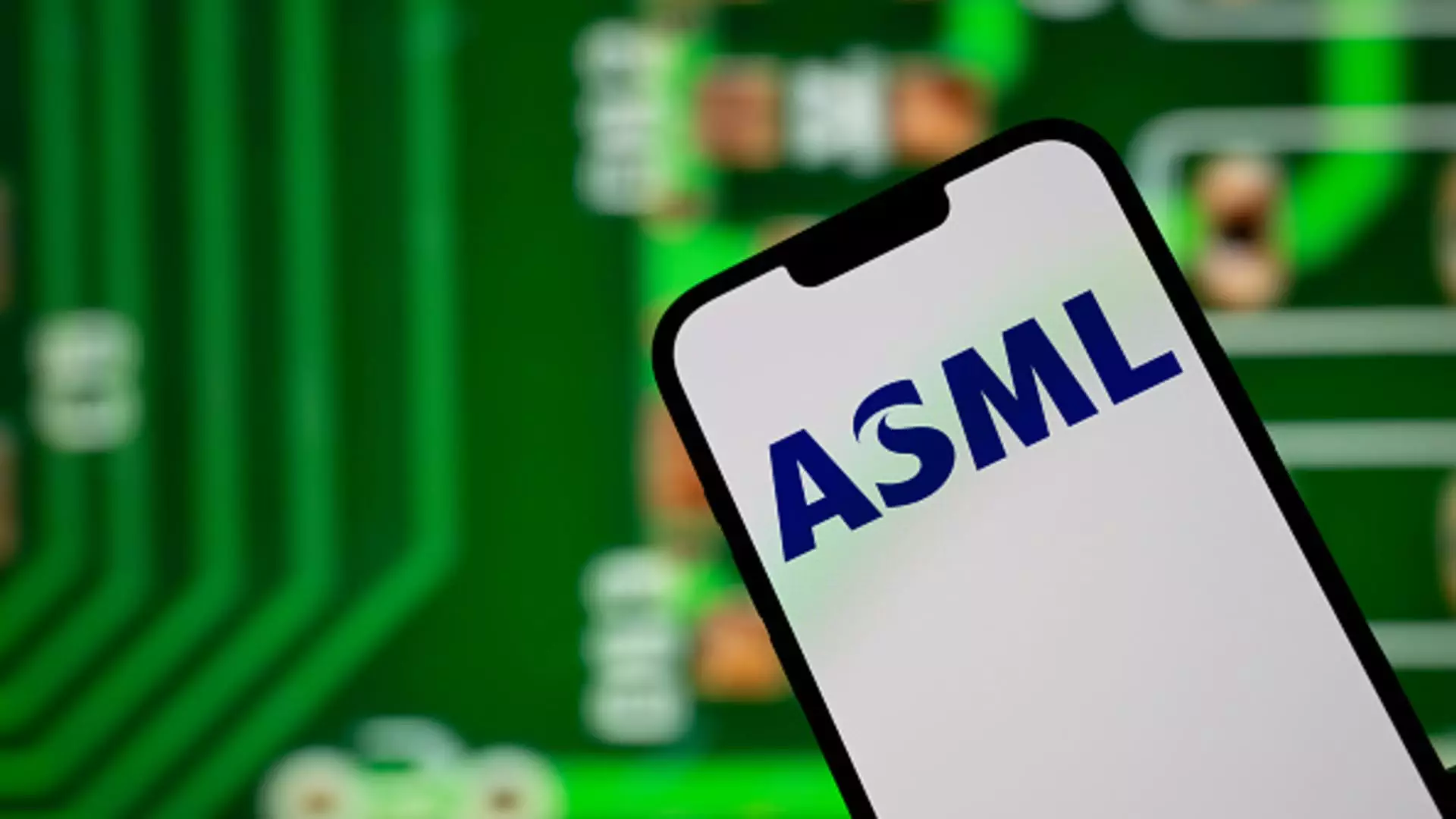The recent report from Dutch semiconductor equipment leader ASML has sent ripples of concern across the tech industry, illuminating the delicate balance it maintains in the shadow of global economic shifts. In the first quarter of 2025, ASML fell short of expectations with net sales of €7.74 billion, slightly below the anticipated €7.8 billion. Though the company reported a net profit of €2.36 billion, which marginally surpassed predictions, these mixed results reflect a larger, more troubling narrative regarding the semiconductor sector’s viability. As we dive deeper into the complexities of ASML’s status, we must recognize that the seemingly positive aspects of AI demand may be overshadowed by pervasive uncertainties.
Unfolding Potential with AI, but a Cloud of Doubt
Artificial intelligence has been touted as the driving force for the semiconductor industry’s growth, a beacon of hope in an otherwise uncertain landscape. ASML CEO Christophe Fouquet has highlighted AI as a pivotal factor propelling demand for their high-precision chip-making equipment. However, the optimism here is tempered by the sobering acknowledgment of “uncertainty with some of our customers,” which raises critical questions about the sustainability of this growth. While the initial enthusiasm regarding AI creates an illusion of stability, it could quickly dissolve into a chaotic reality if trade restrictions weaken customer confidence. As proud as ASML may be of its cutting-edge technologies, the instabilities stemming from political and economic factors threaten to undermine long-term progress.
The Impact of U.S. Trade Policies: A Double-Edged Sword
In a timeframe marked by escalating trade tensions, ASML finds itself at a crossroads. U.S. tariffs, an echo of ongoing geopolitical strife, have raised concerns on both macroeconomic and sector-specific levels. While ASML projects its revenue for 2025 to fall between €30 billion and €35 billion, trade restrictions create a fog of unpredictability that could push revenues toward the lower end of this range. Tariffs are not merely bureaucratic inconveniences; they represent a broader, systemic risk that might not only affect ASML’s immediate operations but also ripple throughout the semiconductor supply chain. For an industry reliant on global collaboration and investment, the ramifications are profound, forcing players to scramble for solutions amid tightening regulations.
The Rethinking of Global Supply Chains
The conversation around ASML also brings to light the fragility of global supply chains in the semiconductor realm. Equities within this sector have seen heightened volatility recently, amid fears of U.S. policies disrupting the longstanding relationships between equipment providers and manufacturers. With announcements of investigations into the national security implications of semiconductor imports, questions linger about where ASML stands. Analysts such as Ben Barringer have pointed out that it is “too early to tell” the specific impacts of these tariffs on ASML’s business model. This uncertainty should act as a call for all stakeholders to reassess their positions and prepare for a potential restructuring of industry norms.
NVIDIA’s Warnings: A Broader Signal?
The situation is further complicated by the recent disclosure from chip titan NVIDIA, which anticipates a staggering quarterly charge of $5.5 billion due to export restrictions. Such significant financial adjustments indicate an alarming trend that should not be overlooked as an isolated incident. They underscore the systemic vulnerabilities faced by semiconductor manufacturers and raise pressing questions about the long-term impact on innovation, employment, and consumer prices. Will ASML also need to brace for similar ramifications if the landscape shifts drastically? The unease in the market is palpable, and the consequences for ASML could run deeper than mere revenue fluctuations.
The Role of Leadership: Navigating through Uncertainty
In navigating this precarious landscape, ASML’s leadership will play an instrumental role in defining its future trajectory. Fouquet’s commitment to observing the evolving dynamics and responding strategically is commendable. However, it is essential that proactive measures develop in tandem with market changes. The responsibility lies in transforming uncertainty into opportunity, not solely for ASML but across the semiconductor value chain. If ASML intends to lead the industry, it must not only mitigate risks but also advocate for fair trade practices that promote innovation and collaboration.
The trends and tensions surrounding ASML mirror a more significant reckoning within the semiconductor industry at large. The optimism tied to AI demand provides a glimpse of potential yet risks being sabotaged by external economic realities. As we navigate this uncertain terrain, the insights drawn from ASML’s performance will undoubtedly echo across the tech landscape, challenging all players to forge resilient pathways ahead.


Leave a Reply